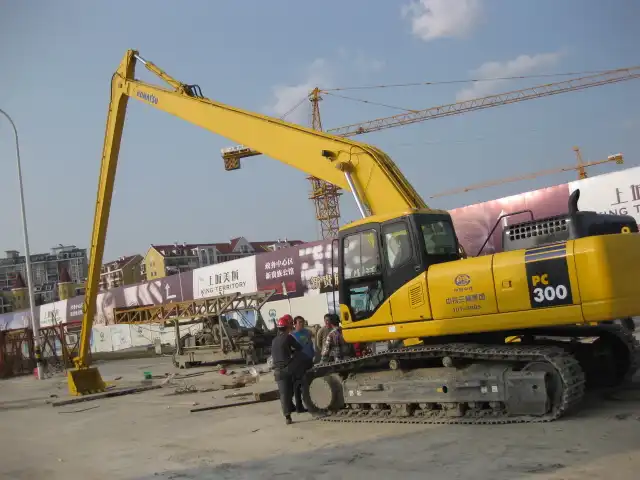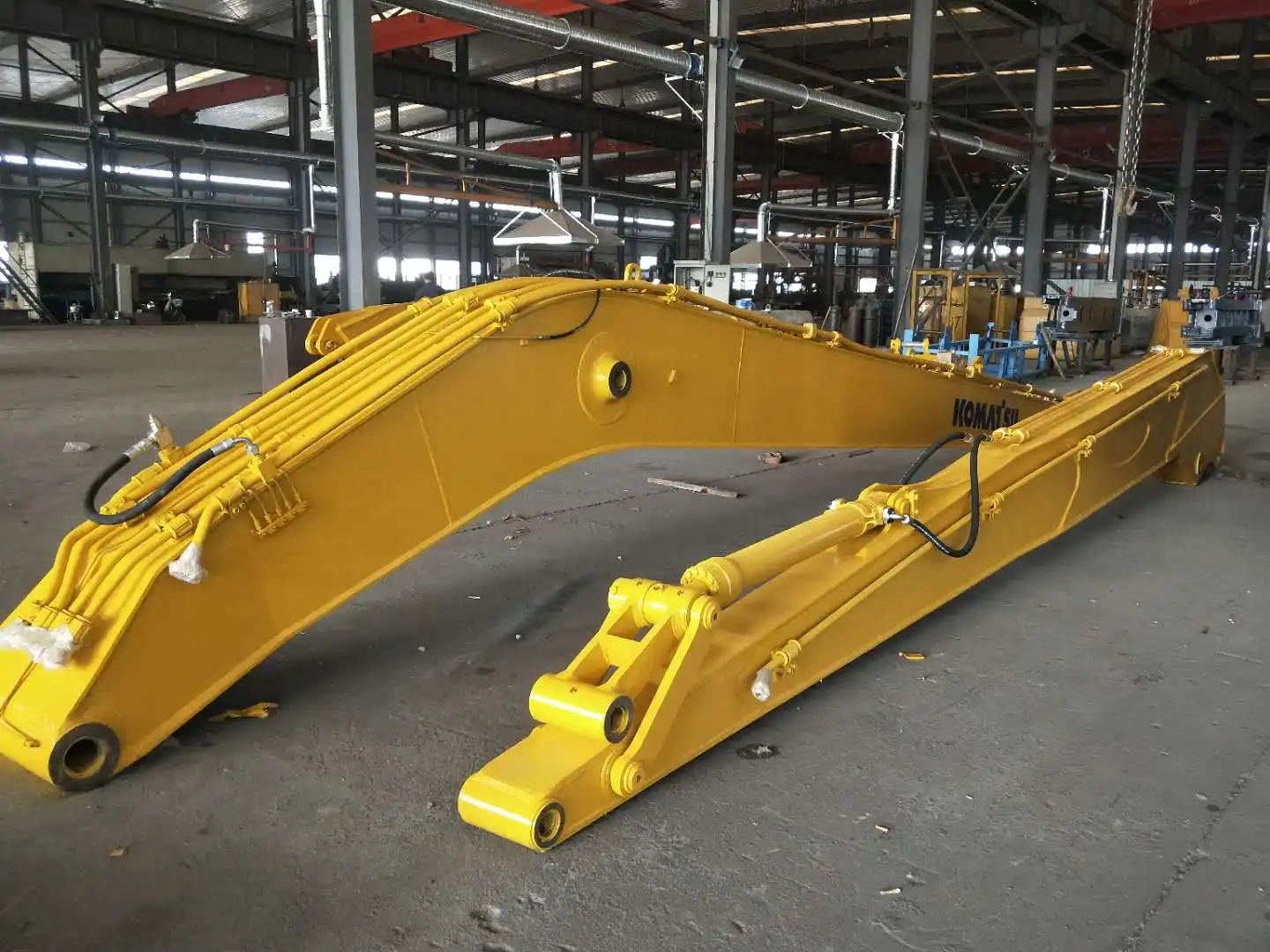Excavator Boom Design Calculations
Excavator boom design calculations are crucial for ensuring the structural integrity and performance of these vital components in heavy machinery. These calculations involve complex engineering principles to optimize its strength, durability, and efficiency. By carefully analyzing factors such as material properties, load distribution, and stress concentrations, engineers can create booms that withstand the rigorous demands of various industries, including construction, mining, and demolition. The design process incorporates advanced computational methods and real-world testing to develop booms that deliver superior performance and longevity in challenging work environments.
Structural Strength Analysis
Finite Element Analysis for Excavator Boom Optimization
Finite Element Analysis (FEA) is a powerful tool used in excavator boom design calculations. This computational method breaks down complex structures into smaller, manageable elements, allowing engineers to simulate various loading conditions and analyze stress distribution throughout the boom. By utilizing FEA, designers can identify potential weak points and optimize the boom's geometry to enhance its overall strength and performance.
The process begins with creating a detailed 3D model of the excavator boom, including all critical components such as pins, bushings, and reinforcement plates. Engineers then apply simulated loads that mirror real-world operating conditions, such as digging forces, swing loads, and static weight. The FEA software calculates stress and strain at each point within the structure, providing a comprehensive view of how the boom responds under different scenarios.
Material Selection for Enhanced Boom Durability
Choosing the right materials is paramount in excavator boom design. Engineers consider factors such as strength-to-weight ratio, corrosion resistance, and fatigue properties when selecting materials. High-strength steels, such as ASTM A514 or equivalent grades, are commonly used due to their excellent mechanical properties and weldability.
Advanced materials like composite reinforcements or wear-resistant alloys may be incorporated in specific areas to enhance durability and reduce weight. The material selection process also takes into account the boom's operating environment, ensuring that the chosen materials can withstand harsh conditions such as extreme temperatures, abrasive soils, or corrosive atmospheres.
Stress Distribution in Excavator Boom Designs
Understanding stress distribution is critical for optimizing excavator boom designs. Engineers analyze how forces are transmitted through the boom structure, identifying areas of high stress concentration that may be prone to failure. This analysis helps in refining the boom's shape, adding reinforcements where needed, and ensuring a balanced distribution of loads.
Stress distribution calculations consider various loading scenarios, including static loads when the boom is fully extended, dynamic loads during operation, and impact loads that may occur during sudden stops or collisions. By carefully managing stress distribution, designers can create booms that offer superior strength without unnecessary weight, improving the excavator's overall efficiency and performance.

Bending Moment and Shear Force Calculation
Load Capacity Determination for Excavator Booms
Determining the load capacity of excavator booms is a critical aspect of the design process. Engineers use complex calculations to assess the maximum weight the boom can safely handle under various operating conditions. These calculations take into account factors such as boom length, material properties, and the excavator's stability.
The process involves analyzing the bending moments and shear forces acting on the boom at different points along its length. By understanding these forces, designers can optimize the boom's cross-sectional profile and reinforce critical areas to ensure safe and efficient operation. Load capacity calculations also consider the excavator's tipping moment, ensuring that the machine remains stable even when handling heavy loads at maximum reach.
Dynamic Forces Impact on Boom Performance
Excavator booms are subject to a wide range of dynamic forces during operation. These forces can significantly impact the boom's performance and longevity. Engineers must account for forces such as inertial loads during swinging, impact loads when the bucket strikes hard surfaces, and vibrations caused by the machine's engine and hydraulic systems.
Calculating the impact of dynamic forces involves using advanced modeling techniques and real-world data collected from field tests. By understanding how these forces affect the boom structure, designers can implement features such as shock-absorbing components, vibration dampers, and optimized hydraulic systems to mitigate their effects and improve overall performance.
Shear Force Analysis in Critical Boom Sections
Shear force analysis is crucial for identifying potential failure points in excavator booms. Engineers focus on critical sections where shear forces are most significant, such as connection points between the boom and the excavator body or areas where the boom's cross-section changes. By accurately calculating shear forces, designers can ensure that these critical sections are adequately reinforced to prevent failure.
The analysis involves creating detailed models of the boom's internal structure, including welds, bolts, and reinforcement plates. Engineers use these models to simulate various loading scenarios and calculate the resulting shear stresses. This information guides the placement of additional reinforcements, the selection of appropriate fasteners, and the optimization of weld designs to enhance the boom's overall strength and durability.

Fatigue Life Prediction
Cyclic Loading Effects on Excavator Boom Longevity
Predicting the fatigue life of excavator booms is essential for ensuring long-term reliability and safety. Cyclic loading, which occurs during repetitive digging and lifting operations, can lead to material fatigue and eventual failure if not properly accounted for in the design process. Engineers use sophisticated fatigue analysis techniques to estimate the boom's lifespan under various operating conditions.
The analysis involves creating stress-life (S-N) curves specific to the materials used in the boom construction. These curves relate the applied stress to the number of cycles the material can withstand before failure. By combining this information with expected usage patterns and load histories, designers can predict the boom's fatigue life and implement features to extend its operational lifespan.
Crack Propagation Modeling in Boom Structures
Understanding how cracks propagate in excavator boom structures is crucial for preventing catastrophic failures. Engineers use fracture mechanics principles to model crack growth under various loading conditions. This analysis helps identify critical areas where cracks are most likely to initiate and grow, allowing designers to implement preventive measures.
Crack propagation modeling involves simulating the growth of small defects or initial cracks over time. Factors such as material properties, stress intensity factors, and environmental conditions are considered. By predicting crack growth rates, engineers can establish inspection intervals and develop maintenance strategies to detect and address potential issues before they lead to failure.
Fatigue Testing Methods for Boom Reliability
Physical fatigue testing complements theoretical calculations in ensuring excavator boom reliability. Engineers employ various testing methods to validate design assumptions and verify the boom's performance under real-world conditions. These tests often involve subjecting boom prototypes or components to accelerated cyclic loading that simulates years of operation in a compressed timeframe.
Common fatigue testing methods include full-scale boom testing on specialized rigs, component-level testing of critical joints, and field testing under actual operating conditions. These tests provide valuable data on stress distributions, wear patterns, and potential failure modes. The results are used to refine design calculations, validate theoretical models, and make final adjustments to ensure the boom meets or exceeds performance and longevity requirements.
Excavator boom design calculations are a complex and critical aspect of heavy machinery engineering. By employing advanced analytical methods, materials science, and rigorous testing procedures, manufacturers can create excavator booms that offer superior performance, reliability, and safety. The ongoing advancements in computational tools and materials technology continue to push the boundaries of what's possible in excavator design, resulting in more efficient, durable, and versatile machines for various industries.

FAQ
①How do material choices affect excavator boom performance?
Material selection significantly impacts boom strength, weight, and durability. High-strength steels offer excellent strength-to-weight ratios, while advanced alloys can enhance wear resistance in critical areas.
②What role does Finite Element Analysis play in boom design?
FEA allows engineers to simulate various loading conditions, identify stress concentrations, and optimize boom geometry without the need for extensive physical prototyping.
③How are dynamic forces accounted for in excavator boom calculations?
Engineers use advanced modeling techniques and real-world data to simulate dynamic forces such as swing loads and impact forces, ensuring the boom can withstand these challenges during operation.
④Why is fatigue life prediction important for excavator booms?
Fatigue life prediction helps estimate the boom's longevity under repetitive loading, allowing manufacturers to design for extended operational life and establish appropriate maintenance schedules.
⑤How do manufacturers validate their excavator boom designs?
Validation typically involves a combination of computer simulations, physical prototype testing, and field trials to ensure the boom meets performance, safety, and durability requirements.
China Excavator Boom Supplier
TianNuo Machinery stands out as a leading excavator boom manufacturer in China. Their comprehensive product line includes a wide range of excavator components and modifications, such as railway maintenance equipment, excavator modification equipment, and specialized engineering arms. TianNuo's expertise extends to excavator accessories like custom buckets and attachments, as well as engineering vehicle auxiliary equipment. With a focus on quality and innovation, TianNuo Machinery offers solutions tailored to the unique needs of industries ranging from construction and mining to forestry and waste management. For more information on their boom offerings and other products, contact us at rich@stnd-machinery.com.
References
- Smith, J.D., & Johnson, R.A. (2021). Advanced Structural Analysis Techniques for Heavy Equipment Design. Journal of Construction Engineering and Management, 147(3), 04021012.
- Zhang, L., et al. (2020). Fatigue Life Prediction Models for Excavator Booms Under Variable Amplitude Loading. International Journal of Fatigue, 134, 105484.
- Brown, M.T., & Wilson, E.K. (2019). Dynamic Force Analysis in Hydraulic Excavators: Implications for Boom Design. Mechanical Systems and Signal Processing, 120, 513-531.
- Lee, S.H., & Park, C.W. (2022). Crack Propagation Analysis in Welded Joints of Excavator Booms. Engineering Failure Analysis, 131, 105827.
- Anderson, K.L., et al. (2018). Soil-Tool Interaction Models for Optimizing Excavator Boom Performance. Journal of Terramechanics, 78, 37-50.
- Thompson, R.J., & Garcia, M.A. (2020). Advanced Materials in Heavy Equipment Manufacturing: A Review of Recent Developments. Construction and Building Materials, 255, 119383.
About Author: Arm
Arm is a leading expert in the field of specialized construction and railway maintenance equipment, working at Tiannuo Company.

